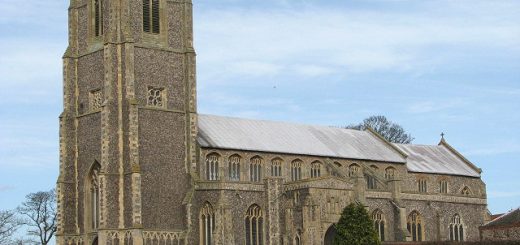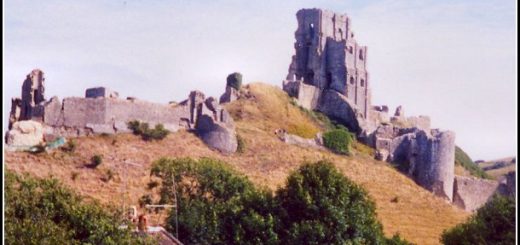The Skulls of Timberbottom Farm and Bradshaw Hall
Timberbottom Farm (demolished), Bradshaw Church, Bradshaw Hall (demolished 1950’s) and Turton Tower are all associated with the story of two skulls that have been linked to haunt like experiences. The two human skulls, one male, one female are thought to have been discovered in Bradshaw Brook near Timberbottom Farm in 1750 and then subsequently kept in the farmhouse on the mantlepiece. Attempts to remove the skulls from the house would result in poltergeist like activity with the movement of furniture and unexplainable loud noises, including screaming.
![Steve Snodgrass [CC BY 2.0 (https://creativecommons.org/licenses/by/2.0)], via Wikimedia Commons](http://www.mysteriousbritain.co.uk/wp/wp-content/uploads/2008/08/1280px-Human_skull_-_close_up-300x199.jpg) The following early comment on the case appeared in Lancashire Legends (1873) by John Harland & T T Wilkinson. ‘At a short distance from the Tower [Turton Tower] there is a farmhouse, known by the name of Timberbottom, or the Skull House. It is so called from the circumstance that two skulls are or were kept here, one of which was much decayed, and the other appeared to have been cut through by a blow from some sharp instrument. Tradition says that these skulls must be kept in the house, or the inmates will never cease to be disturbed. They are said to have been buried many times in the graveyard at Bradshaw Chapel [see map below], but they have always had to be exhumed and brought back to the farmhouse. They have even been thrown into the adjacent river, but to no purpose; for they had to be fished up and restored to their old quarters before the ghosts of their owners could once more rest in peace.’
The following early comment on the case appeared in Lancashire Legends (1873) by John Harland & T T Wilkinson. ‘At a short distance from the Tower [Turton Tower] there is a farmhouse, known by the name of Timberbottom, or the Skull House. It is so called from the circumstance that two skulls are or were kept here, one of which was much decayed, and the other appeared to have been cut through by a blow from some sharp instrument. Tradition says that these skulls must be kept in the house, or the inmates will never cease to be disturbed. They are said to have been buried many times in the graveyard at Bradshaw Chapel [see map below], but they have always had to be exhumed and brought back to the farmhouse. They have even been thrown into the adjacent river, but to no purpose; for they had to be fished up and restored to their old quarters before the ghosts of their owners could once more rest in peace.’
In the 20th century the case was investigated by Harry Price who mentioned his involvement in his 1945 book ‘Poltergeist Over England: Three Centuries of Mischievous Ghosts’. ‘The owner of the property on which Timberbottom Farm is situated happened to read mu book on the haunting of Borley Rectory and wrote to me. He is Colonel Henry M Hardcastle* of Bradshaw Hall, Bolton. In some correspondence that passed between us during November 1940, the Colonel told me some interesting things about the farm, which has been in th epossession of his family for generations.
The Poltergeist, I was informed, has infested the farm fo rthe last 150 years. In addition to the manifestations I have recorded above, the Poltergeist has a knack of opening and clsoing a certain chest of drawers in a room above the kitchen, in which many tapping sounds occur. Sometimes the cat will follow the taps round the room. The ‘visitations’ of the Geist are at long intervals: once nine, and at another time, eleven years.
Colonel Hardcastle related to me a remarkable story of two skulls – one male and one female – that used to be at the farm. Many years ago, during one of the periodic disturbances, his grandfather suggested, as a possible way of stopping the trouble, that the skulls be buried in the churchyard. This was done, whereupon the most violent manifestations broke out all over the house. The Colonel’s grandfather** could only make a further suggestion that they should be dug up again. This was done and he put them on the family Bible, where they have remained ever since. The woman’s skull, about six inches across, he had mounted in silver and placed on a stand.
About nine years ago, Colonel Hardcastle accidentally damaged the mounting and took it, and the skull, to a Manchester silversmith to be repaired. That very day, the most violent disturbances occurred at the farm. These continued incessantly until the skull was restored to its place alongside its male companion on the family Bible. Then all was quiet again for nine years, when a recrudescence of the trouble occurred in the autumn of 1940.
At some point the skulls were removed from Timberbottom Farm and were placed safely upon the family Bible in he 17th century Bradshaw Hall, home of Colonel Hardcastle. Whether this was around the time that Timberbottom Farm was demolished or not I am unsure, but apparently the move did create disturbances at the farmhouse.
Some additional experiences concerning the skulls were reported in the Bolton News on 29 September 1995 in an article entitled ‘THE ghosts of Timberbottom Farm and Bradshaw Hall won’t go away . . .’
Mr J. Lomax, of Glazedale Street, Tonge Moor, tells me that he was asked to quote for the felling of Bradshaw Bleachworks chimney (the one that fell on the old Bradshaw Hall memorial porch).
“I went one evening at about 7.30 to look at the site and chimney,” he writes. “Standing between the chimney and the porch I suddenly got a very uneasy feeling that someone was watching.
“The chimney was tall and the base square, built in stone, with a large hole in the south-west side. I was about 60 to 70 yards from it when I saw a figure standing in the opening at the base.
“I thought it was someone walking a dog. I walked towards the chimney, and much to my astonishment the figure started to fade.
“At this point I suddenly got a premonition of the chimney hitting the porch.
“Some time later I was told that I hadn’t got the contract. I told the site agent about my experience and what might happen to the chimney. The rest is history.
“But who was the figure in the base of the chimney? Was it the spirit of Thomas Hardcastle?”
Another letter came from Mr Arthur Clifford, of Rutland House, Millview, Bridgeman Street, Bolton, who wrote about the skulls.
“Our milk man was James Heywood of Timberbottom Farm,” he writes. “When I was eight years old, in 1922, I remember Mrs Heywood delivering the milk and telling my mother that the cat and dog had run off. The previous night she had heard knocking and scratching at the door and thought someone had brought the animals back. When she opened the door, nothing was there, but she heard footsteps go past her across the room and up the stairs. It was said that whenever the skulls at Bradshaw Hall were separated the same thing happened – they found out that Col. Hardcastle had sent one away for remounting.”
He also tells me about a friend, Jack Falon, who was courting a maid at Bradshaw Hall. One night she dared him to sit in the colonel’s trophy room, at the banqueting table, in the dark, with a skull at each end.
“After a minute there, he felt the hair on the back of his neck stand up, and shot out of the room like a scared rabbit. She apologised with a laugh and said that it took a brave man even to attempt it. Then she went back to placate the spirits of poltergeist.”
Following the demolition of Bradshaw Hall in the 1950’s the skulls found their way to the Grade I listed Turton Tower which is the last recorded location of them I am aware of. I believe they may be on exhibit at the Tower or perhaps kept in a store room.
*Henry Marmaduke Hardcastle (Born 23 Mar 1871 – Died 13 May 1948)
**James Hardcastle (Born 11 February 1801 – Died 30 Sep 1869)




Recent Comments